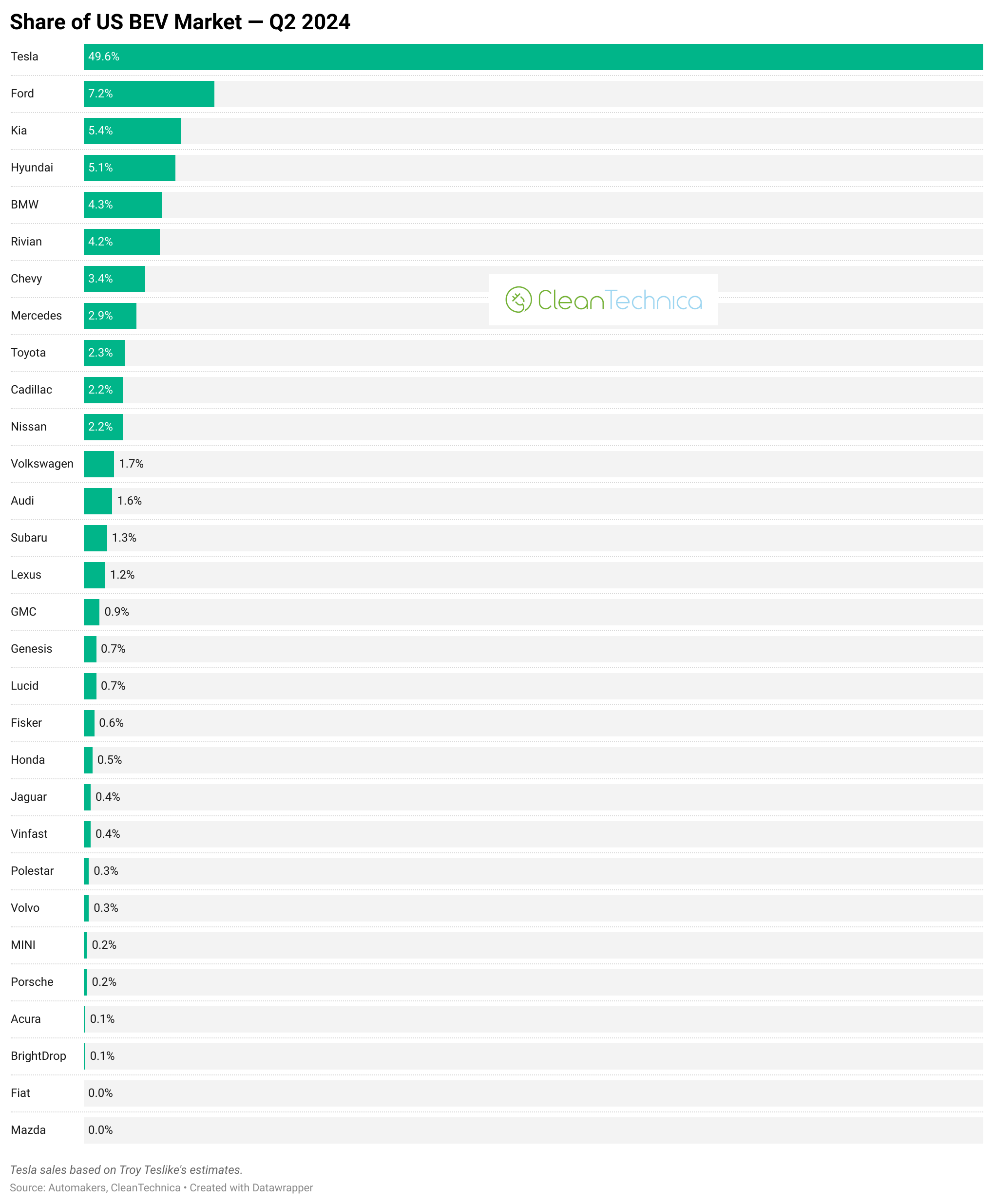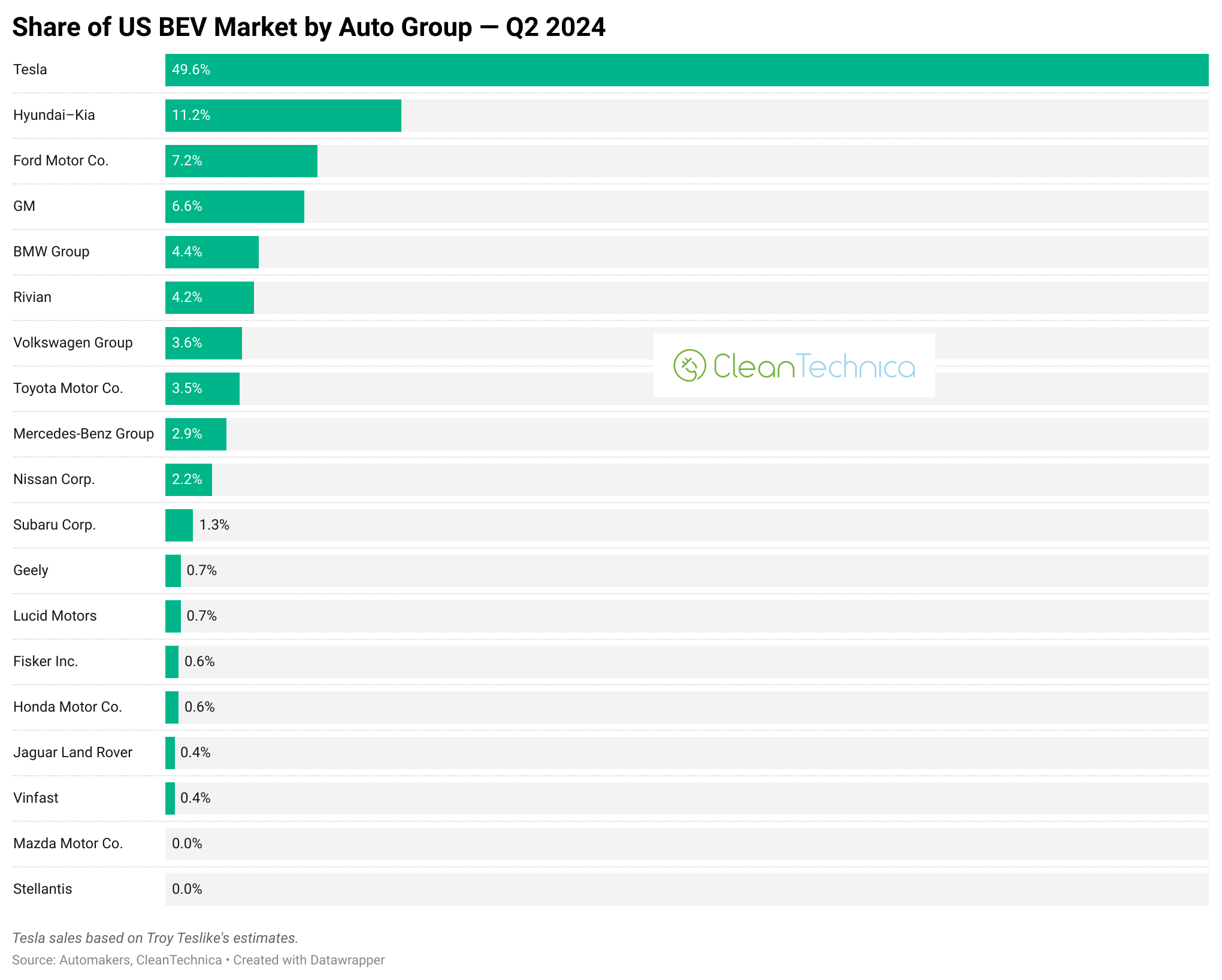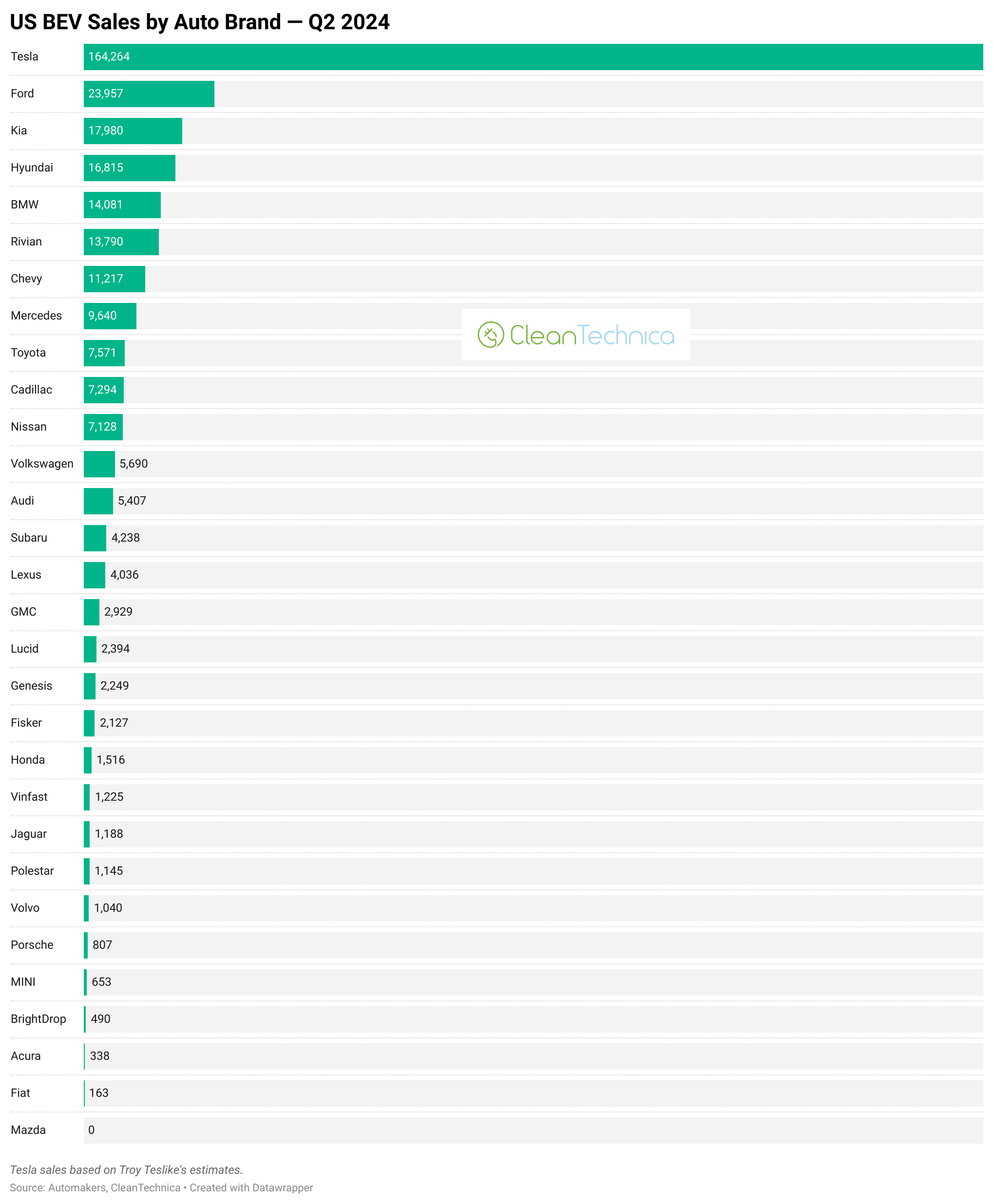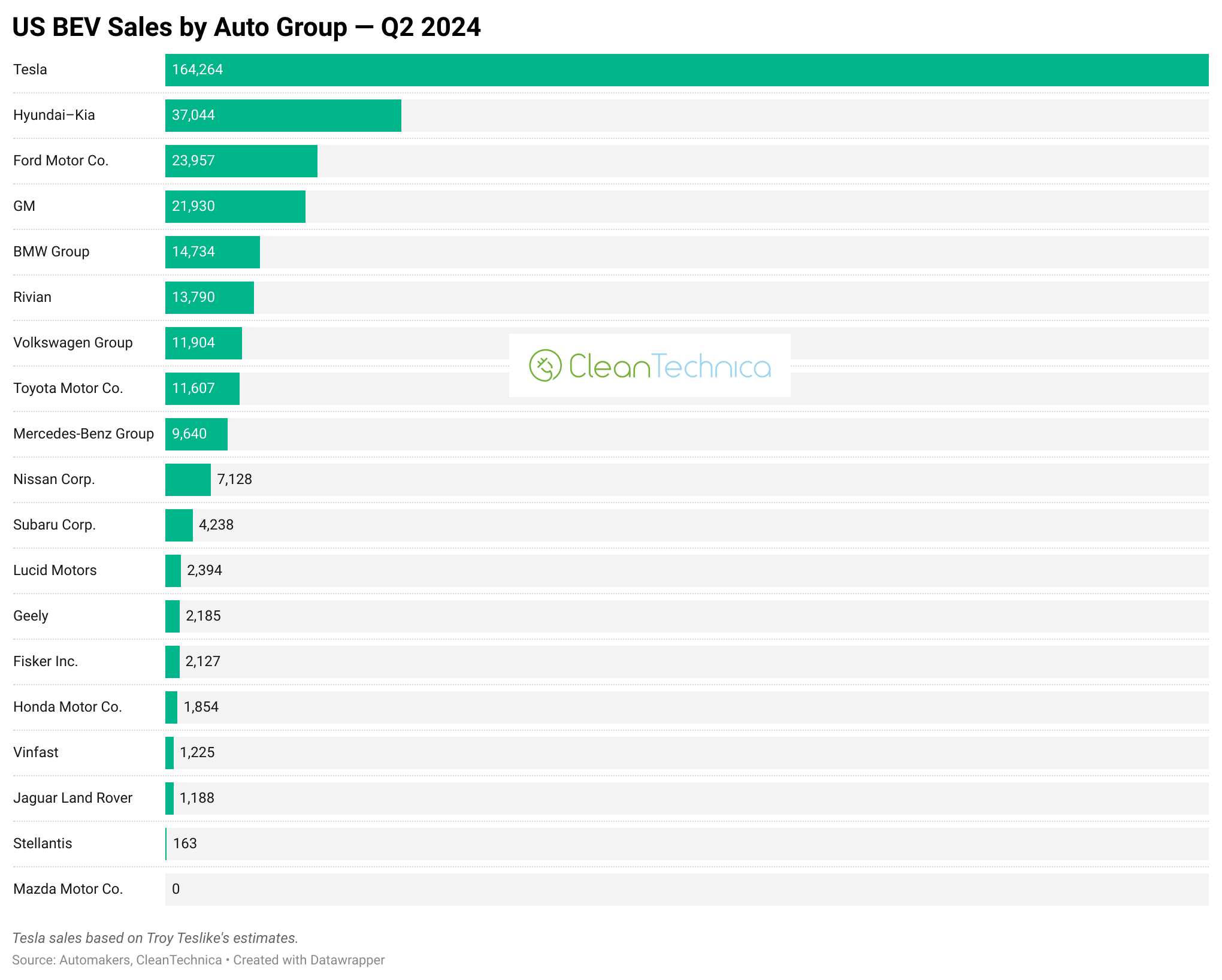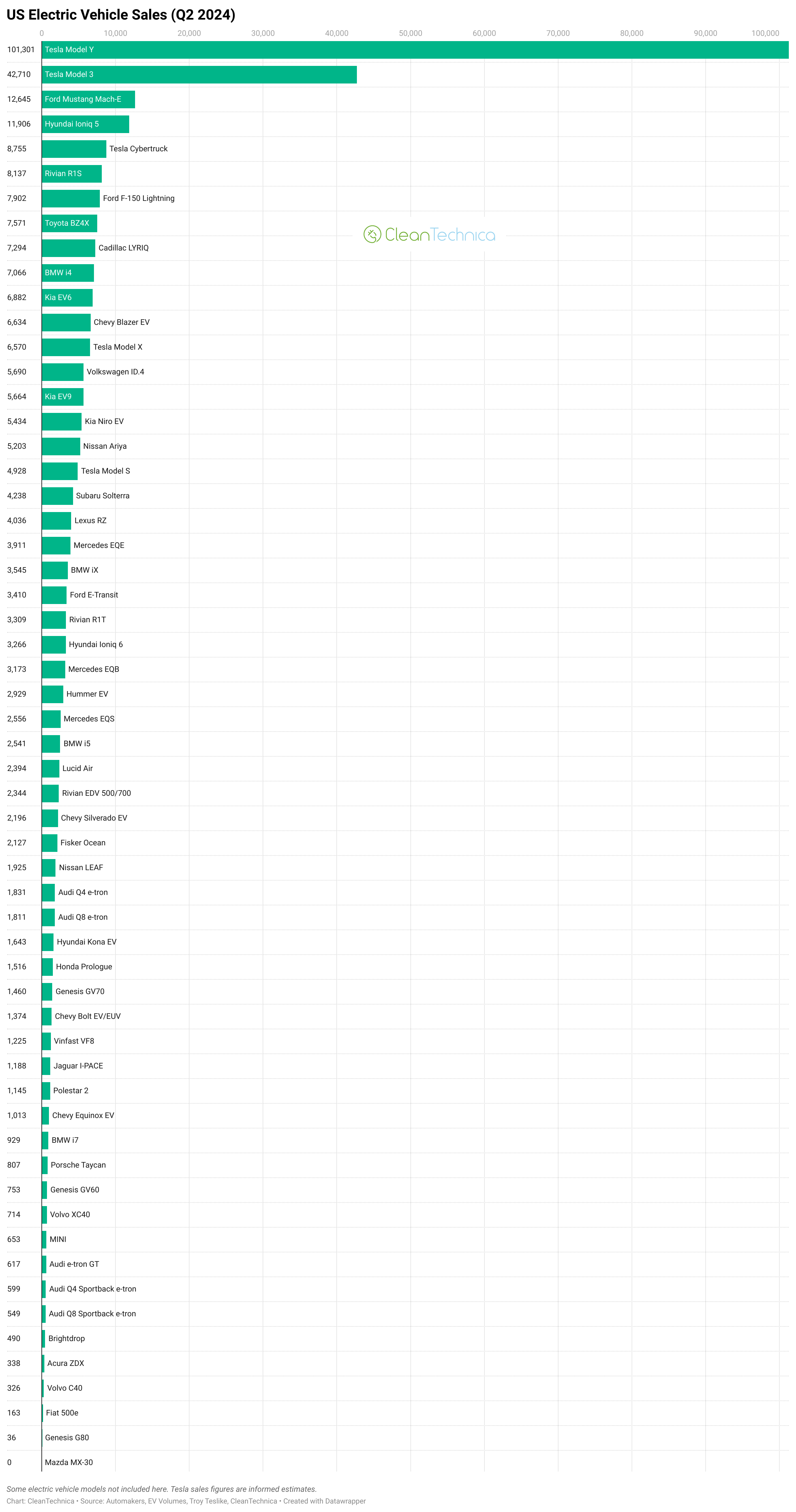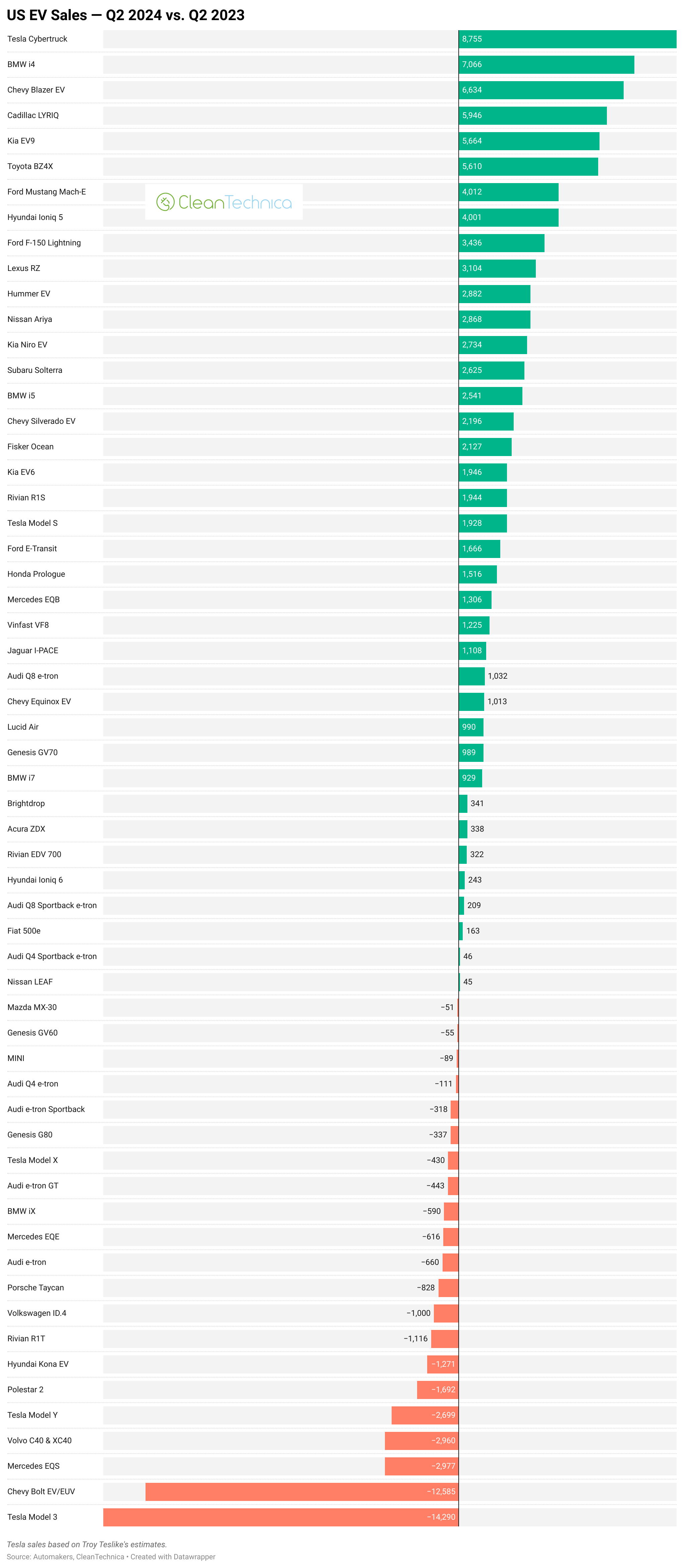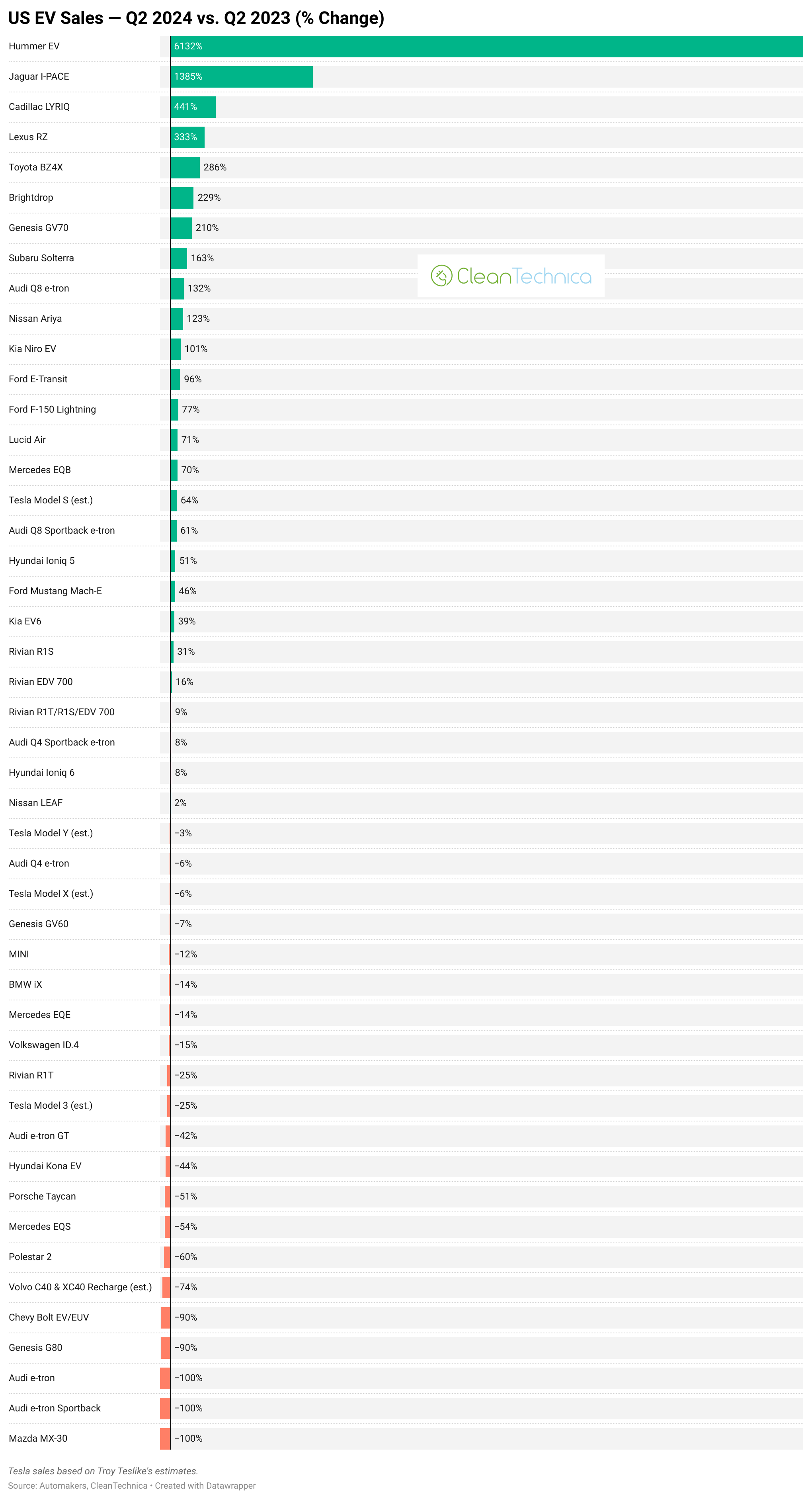Sign up for daily news updates from CleanTechnica on email. Or follow us on Google News!
The US electric vehicle (BEV) market continues to evolve, and that evolution means more models, broader brand and vehicle choice for consumers, more legacy automakers putting forward decent options, and a little more balance in the market. One piece of evidence on that, or one way it’s playing out, is that Tesla has dropped below 50% of the US BEV market for the first time in … several years. This is down from a peak of around 80% of the market.
Naturally, it’s not far below 50%, and if you’re rounding up, it’s still 50%, but this is a notable milestone in the US BEV market, so it seemed like the top thing to highlight in this edition of our quarterly US EV sales reports. Before more commentary on it, here’s the brand BEV market share chart followed by the same chart for auto groups (Tesla doesn’t have any sub-brands, so its share is the same in both):
There’s still clearly no other company close to Tesla when it comes to selling electric vehicles in the United States. Nearly 50% of the market is still a bonkers share of any market for the company to have.
Below Tesla, we can see that Ford (7.2%), Kia (5.4%), and Hyundai (5.1%) take the next three spots, and if we’re looking at it by automotive group, Hyundai and Kia team up for a pretty solid partnership (11.2%) — at least, compared to everyone but Tesla. Premium brand BMW taking 5th implies that it’s hitting above its weight, but I’ll come back to that in a separate report when I dig into what share of each brand’s auto sales are BEV sales. Perhaps BMW can take the #1 spot this time.
Let’s now look at the charts for actual sales volume, not BEV market share.
It’s disappointing that only six auto brands got enough sales in the quarter to be on track for 50,000+ annual BEV sales. And two of those brands are pure BEV startups, so only four legacy automakers were on track for 50,000+ annual BEV sales when looking at Q2 sales.
Furthermore, aside from Tesla, only Ford is close to the 25,000 quarterly sales mark, which would extrapolate out to 100,000 BEV sales a year. (Or, if looking at group sales, Hyundai–Kia surpass that — on track for about 150,000 BEV sales on an annualized basis.)
If we’re being honest, this is disappointing and embarrassing. The US auto market isn’t electrifying fast enough, especially when we can see that 31% of auto sales in China are BEV sales and 14% of auto sales in Europe are BEV sales.
Getting to the sales numbers of individual BEV models, the Tesla Model Y and Tesla Model 3 are in a league of their own. The Ford Mustang Mach-E, a valid competitor to the Model Y, is in third place, but the Model Y still gets about 8 times as many sales. The Hyundai IONIQ 5 joins the Mustang Mach-E as one of the best of the rest, close on the tail of the famous horse-themed model. Then, we don’t even get a third EV from a legacy automaker before another Tesla takes the stage — the Cybertruck this time.
Anyway, you can examine the rest of the chart, but sales just slowly trail off from there for the next 53 models. But, hey, at least we’ve got more than 50 models now, not 10 or so! Progress.
In terms of which models improved the most year over year in terms of units sold, we’ve got quite a bit of diversity here. Aside from the new-to-market Tesla Cybertruck, there’s the BMW i4 premium sedan, then the relatively affordable Chevy Blazer EV, then the large and in charge Cadillac LYRIQ, then the family sized Kia EV9, and then the, well, I don’t know how to categorize it — Toyota BZ4X. What this diversity shows me is the market is maturing and more buyers can find an EV for themselves because there’s more variety to choose from. Again, this is a key that ties into the narrative above about Tesla’s market share dropping below 50%.
If you examine the change in terms of percentage change rather than volume change, you get a different view. Though, I’m including two charts below for this topic, because the change in Hummer EV sales from just a few vehicles trickling out of the factory to a few thousand doing so make its percentage growth enormous, which makes it hard to visualize the other changes on the chart. Also, a similar case of the Jaguar I-PACE led me to exclude it in the second chart as well.
This last chart basically shows some luxury vehicles and some stragglers catching up to the party. The Cadillac LYRIQ has, admittedly, been doing quite well before this, but it is up enormously over last year. Then you’ve got the relatively new Lexus RZ and Toyota BZ4X. Several other new or new-ish EV models are on this one, but a few others that stand out to me are the Nissan ARIYA, Kia Niro EV, Ford E-Transit, and Ford F-150 Lightning, which saw large percentage growth from significant volume growth. Kudos to those brands and models for making some significant progress.
For more, see related quarterly US auto and BEV sales reports here:
USA Up To 8% BEV Share Of Auto Market
US Gas Car Sales Down 1% in Q2, Down 14% Compared To Q2 2019
And there’s one more coming, the one mentioned above in which I will dive into BEV share of different automakers’ overall auto sales. I’m excited to see what that shows!
Then, yes, I should get on to Q3 before too long!

Have a tip for CleanTechnica? Want to advertise? Want to suggest a guest for our CleanTech Talk podcast? Contact us here.
Latest CleanTechnica.TV Videos
CleanTechnica uses affiliate links. See our policy here.
CleanTechnica’s Comment Policy

